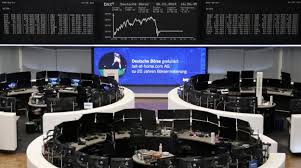Analysis Note: S&P 500 Pulls Back Amid Rumours Of Fed Shakeup, Trade Tensions

Antonio Di Giacomo
“The S&P 500 index fell toward the 6,340 level after reports emerged that Christopher Waller, current governor of the Federal Reserve (Fed), is now the leading candidate to replace Jerome Powell as chairman of the central bank. Despite the decline, the index still holds a weekly gain of over 2%, supported by strong corporate earnings that have maintained optimism in specific market sectors.
President Donald Trump’s economic advisers have been well-received by Waller due to their cautious and conservative approach to monetary policy. His technical background and deep understanding of the Fed’s inner workings make him a key figure for a potential shift in economic direction. This possibility has generated uncertainty among investors, who are trying to anticipate possible adjustments to interest rates.
Amid this scenario, tech stocks have shown resilience, notably Apple, which surprised the market with the announcement of a new $100 billion investment in U.S.-based manufacturing. This brings its total commitment to $600bn and has been interpreted as a strategic move to strengthen its position ahead of possible regulatory or trade changes in a potential second Trump term.
The news was well received on Wall Street, where Apple closed significantly higher, helping to stabilize major stock indexes. Analysts believe the company is seeking to reinforce its nationalist image while shielding itself from potential sanctions or import restrictions that could impact its global supply chain. Domestic manufacturing could also benefit from tax advantages if a Republican-led tax reform is enacted.
In line with this strategy, Trump escalated his trade rhetoric by announcing a new 25% tariff on imports from India. The move is justified by India’s refusal to halt its purchases of Russian oil, which, according to Trump, undermines international efforts to sanction Moscow. This stance risks further straining relations between Washington and New Delhi.
Additionally, Trump proposed a 100% tariff on imported semiconductors, except those made within the United States. This measure aims to strengthen the country’s technological independence and boost local manufacturing at a time when the tech war with China remains a geostrategic priority for Republicans. If implemented, the tariff could have a significant impact on the global semiconductor industry, particularly in countries such as Taiwan and South Korea.
Taken together, these mixed signals, a potential new direction at the Fed, massive industrial investments, and a more aggressive trade policy, have created a climate of caution in financial markets. While some sectors have benefited, others remain on edge, awaiting clarity on how the economic environment will evolve under Donald Trump’s policies.
Conclusion, the course of the markets in the second half of the year may be shaped by key political decisions, both monetary and trade-related. The prospect of Christopher Waller leading the Fed and Trump’s reindustrialization agenda is reshaping investor expectations, who must now adjust their strategies in anticipation of a new economic cycle dominated by protectionism and state intervention.”
Giacomo is Financial Markets Analyst for LATAM at XS






